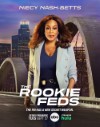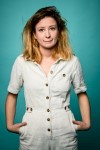
Author Archives: Danielle
Schaakmat. Musa – Hanzehof Zutphen
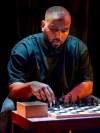
Miss Scarlet and the Duke, S03, (6 afl.)
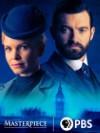
Miss Scarlet and the Duke, S02 (6 afl.)
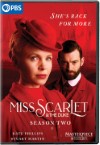
Sammlung Scharf-Gerstenberg – Berlijn, Duitsland
Kleine maar fijne expositie van het Berggruen Museum in de Sammlung Scharf-Gerstenberg.
While the Museum Berggruen is closed for major renovations, and a large section of the collection is on tour, the Sammlung Scharf-Gerstenberg has made museum space available on it’s first upper level to show a small but representative selection of Berggruen works. In addition to Alberto Giacometti’s Katze (Cat, 1951), which found its place inside the Stüler building entrance, works by Pablo Picasso, Paul Klee, Henri Matisse and Paul Cézanne now hang on the walls around Giacometti’s Große stehende Frau III (Large Standing Woman III, 1960).
Early Contact with the Surrealists
Three of these artists – Giacometti, Picasso and Klee – were in contact with the Surrealists, who are now the main emphasis of the Sammlung Scharf-Gerstenberg. In works such as Klee’s Frau R. auf Reisen im Süden (Frau R. Travelling in the South, 1924) and Picasso’s Bildnis Nusch (Portrait of Nusch, 1937), the eyes ‒ which the Surrealists paid special attention to like hardly another part of the body ‒ are the focus of the images.
Portraits of Women
Another small group of works takes portraits of women as its subject: Cézanne’s Junges Mädchen mit offenem Haar (Young Girl with Loose Hair, 1873‒74), Picasso’s Frau in einem Sessel (Woman in an Armchair, 1939), Klee’s Rotes Mädchen mit gelbem Topfhut (Red Girl with Yellow Pot Hat, 1919) and Matisse’s portrait of Lorette (1917).
LuYang DEKO – PalaisPopulair
Streetfood auf die Achse – Berlijn, Duitsland
Tussen grootse oude gebouwen ligt de kleine foodmarkt Streetfood auf die Achse. De grote gebouwen, volgens mij een voormalige bierbrouwerij, herbergen allerlei culturele instellingen, bioscoop etc. Maar op zondag een aardig marktje om even lekker te snacken.
Haus Schwartzenberg street art – Berlijn, Duitsland
Markthalle Neun, Berlijn, Duitsland
Markthalle Neun schijnt het leukst te zijn op donderdagavond, maar ook in het weekend als ik er telkens beland, zijn er volop eettentjes, foodcarts en meer om lekker wat verschillende nationaliteiten keukens te proeven. En er hangt altijd een gezellige sfeer. Maar niet alleen Markthalle Neun is leuk, eigenlijk is de hele wijk er omheen dat. Aanrader dus.
RAW-Gelände street art, Berlijn, Duitsland
Geweldige street art stukken op een wegkwijnend stuk industrieterrein net voorbij het Ostbahnhof. Zoals in Duitsland wel vaker het geval is, kunnen de Duitsers toe zonder comfort of luxe in hun altenatieve uitgaansleven: een oud krat, een verrotte houten bank, het is allemaal prima. En dat is op dit oude industrieterrein ook het geval, overal vind je onverwacht een café, nachtclub of restaurantje. Op het moment dat ik er rondliep, waren die bijna allemaal gesloten. Dat gaf des te meer rust om lekker tussen de street art te dolen.
Mauerpark – Berlijn, Duitsland
Nu ik er toch voorbij kwam, op zoek naar de wijk erboven, dook ik het Mauerpark eens in. En dat was erg leuk. Naast allerlei zweverige, alternatieve en rommelmarktachtige kraampjes zijn er ook voldoende kramen met eten uit allerlei contreien. En dus eindigde ik met een Koreaans broodje en een Iraans drankje van melk (of all the things) in de hoop dat mijn buik niet ging steigeren door de zuivel). Leuk, zo op een zondagmiddag.
Isa Genzken. Zeichnungen – Galerie Buchholz, Berlijn, Duitsland
Deze expositie van tekeningen was voor mijn doen wat ‘vaag’, vooral heel veel schetsmatige uitwerken van stukken die ze wilde gaan maken, leek het. Het leken in mijn ondeskundig oog niet echt werken an sich. En dat het op een piepende en krakende bovenverdieping van een oud, historisch pand zit, werkte extra mee aan die indruk.
“Zeichnung Plan Collage” ist die bisher umfangreichste Ausstellung, die sich ausschließlich Isa Genzkens Arbeiten auf Papier widmet. In beiden Ausstellungsräumen unserer Berliner Galerie zeigen wir Arbeiten aus jeder Schaffensphase der Künstlerin, von ihren frühesten Zeichnungen und Gouachen der zweiten Hälfte der 1960er Jahre bis hin zu ihrer jetzigen künstlerischen Produktion.
Hans Hartung. Galerie Max Hetzler, Berlijn, Duitsland
Mooie expo in het derde ‘filiaal’ van de Max Hetzler Galerie.
An artistic innovator, Hans Hartung (1904–1989) is renowned for his contribution to European post-war painting. Having already worked as an abstract painter before the Second World War, he developed a dynamic gestural style after 1945, and became one of the most important representatives of European Informel. His work is characterised by its spontaneous, emblematic compositions, which explore the interplay between colour field and line.
This exhibition presents an opportunity to rediscover Hartung’s extraordinary journey out of Germany and through Europe, arriving in Paris in 1936 where he fought against Nazism during the Second World War. Becoming severely wounded in battle in 1944, Hartung thought himself ruined in the aftermath of a traumatic conflict. However, in the 1950s, he became a central figure of abstraction on an international scale, and in 1960 he won the Grand Prix at the Venice Biennale, with a room dedicated to his work in the French pavilion.
In the first comprehensive show in Germany since Hartung’s 2007 solo exhibition Hans Hartung: Spontaneous Calculus, Pictures, Photographs, Film 1922–1989, at the Museum der Bildenden Künste in his native city of Leipzig, works spanning the artist’s oeuvre are on view: from the figurative watercolours and Informel ink drawings of the 1920s to the explosive aerosol paintings of the 1980s, and even his final painting T1989-N10, 1989, created one week after the fall of the Berlin Wall.
Comprising about fifty works and a selection of memorabilia from his archives, this exhibition presents the exceptional variety of Hartung’s work, marked by a skillful blend of fervour and mastery of gesture.
Karel Appel. Encounter in spring and what follows – Galerie Max Hetzler, Berlijn, Duitsland
Bijzondere werken van Karel Appel zoals ik ze eigenlijk nog niet eerder zag. Een eye-opener dus.
Encounter in Spring and what follows, an exhibition of work by Karel Appel (1921–2006), centring around a selection of paintings spanning from 1958 until 2006.
A founding figure of the avant-garde group CoBrA (1948–1951), Appel began his career in the aftermath of the Second World War. Over the course of six decades, the artist experimented widely, drawing on sources as diverse as folk art, outsider art and Jazz’s spirit of improvisation, and working across painting, sculpture, drawing, and stage design. Distinguishable for his astonishing capacity to innovate, Appel never settled in a signature style, media or subject. Alternating between abstraction and figuration, he adopted a material-oriented approach in his practice and promoted a genuine form of expression.
The exhibition’s starting point is the monumental and mesmeric painting Rencontre au printemps (Encounter in Spring), which was commissioned in 1958 for the inauguration of the UNESCO headquarters in Paris. To mark the occasion, UNESCO invited Appel – among luminaries including Jean Arp, Alexander Calder, Isamu Noguchi, Roberto Matta, Joan Miró, Henry Moore, and Pablo Picasso – to make a contribution. Appel painted the ambitious work, not on-site or in his Paris studio, which couldn’t accommodate its size, but in Sam Francis’ studio in Villejuif. He had, by this point, just returned from his first trip to New York for his second exhibition at Martha Jackson Gallery and was profoundly marked by his encounter with the painters of the New York School. As such, Encounter in Spring constitutes Appel’s first painting on such a momentous scale and remains one of the highlights of the UNESCO art collection.
Appel executed a sister painting, Encounter of Worlds, of the same size and year, which is in the collection of the Neue Nationalgalerie in Berlin. Key works in his oeuvre, the two paintings introduce a pictorial language that comes very close to abstraction and is animated by the same spirit of Action Painting. While they might seem a far cry from CoBrA, founded only ten years earlier in Paris, both imply, at their essence, its rallying creed for freedom and spontaneity.
As its title suggests, the sweeping abstract gestures of Encounter in Spring seem to unfurl beneath the viewer’s gaze into an abundance of forms found in nature and landscapes. Treading the threshold between impression and expression, Appel consistently associated real-world experience with what is visible on the canvas and what to a cursory glimpse might appear abstract. This liminal quality binds the works that comprise this exhibition. Viewed in chronological sequence, they reveal the overarching influence of Appel’s discovery of American painting on his first visit to the continent in 1957, and beyond. This is strikingly evident in the richly textured surface of Shattered World, 1960, with its thick impasto paint that appears to have been applied directly from the tube to the left side of the canvas, as much as the primitively rendered face which emerges from the crude brushstrokes and vibrant palette of Visage-Paysage no.4, 1977.
In the Trees series from 1979, Appel’s formerly expressive free lines and solid areas of monochrome brushwork are here substituted for simplified, nearly analytical structures made from a sequence of short parallel brush marks which converge on ascending, vertical formats. The artist had previously come cross enlarged reproductions of details from paintings by Vincent van Gogh – a discovery which paved the way for this new sense of expression, merging discipline with spontaneity. In the late ’90s, works including Up to the Sky no.3, 1998, and Birth of a Landscape, 1999, present densely animated, near-impressionist landscapes, which pulsate with thick swathes of paint. By the 2000s, Appel’s idiom had evolved once more into looser compositions of colour and form: works such as Nimble Acrobat, 2000, and Thought’s Boomerang, 2000, appear light and airy, with large swathes of raw canvas still visible, while in Evening Forest, 2003, real wood branches are embedded on the surface of the work. Brimming with creative innovation, this exhibition encapsulates the work of an artist whose imaginative and experimental approach to the painterly medium never ceased.
Martin Klippenberger. Heute denken, morgen fertig. – Galerie Max Hetzler
heute denken – morgen fertig, an exhibition of works by Martin Kippenberger (1953–1997) from the 1980s and 1990s from private collections. In addition to paintings, sculptures and drawings by Kippenberger, the exhibition will present photographs by Wilhelm Schürmann and Andrea Stappert.
Mooie expositie in een grote, lichte, ruime expositieruimte.
Still Alive – Ava Strong (2022)
Operation Fortune. Ruse de guerre (2023)
My life is murder, S01 (10 afl.)
Enschede lacht, Vestzaktheater – Enschede
The Rookie Feds, S01 (10 afl.)
